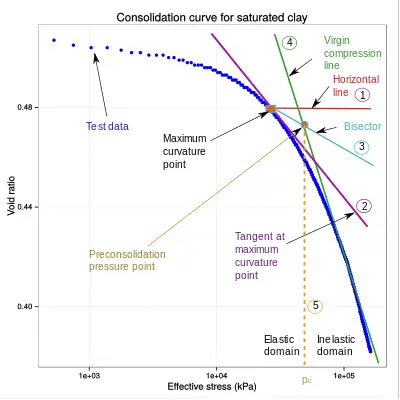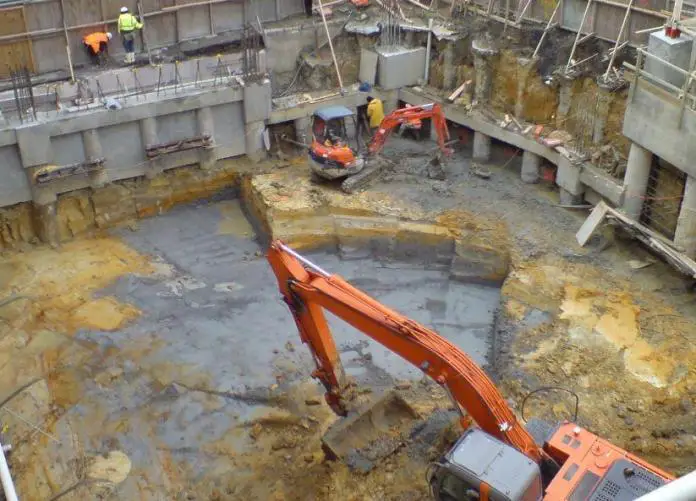When a saturated clay is subjected to external pressure, the pressure is initially taken up by the water in the pores thereby leading to excess pore water pressure. If drainage is permitted in the system, a hydraulic gradient is developed and the excess water begins to flow out of the soil mass.
As water dissipates from the system, the pressure gradually gets transferred to the soil skeleton (soil grain) and they begin to rearrange and compress until the water is completely dissipated from the soil. This process continues until the entire pressure is transferred to the soil grains. This process is known as consolidation and occurs in cohesive soils only. Pore water dissipation in granular soil is immediate.
Consolidation can occur in a soil mass for a lot of reasons such as;
- Application of external static load from structures
- Lowering of the groundwater table
- Desiccation
- Self-weight of the soil (an example is recently placed fill)
Clay soil is said to be normally consolidated if the effective overburden pressure that it is currently experiencing is the maximum it has ever experienced in its history. On the other hand, it is said to be overconsolidated if the present overburden pressure is less than the effective overburden pressure it has experienced in the past.
The ratio of the maximum overburden pressure it has experienced in the past and the current overburden pressure is known as the ‘overconsolidation ratio’ (OCR). The overconsolidation ratio of a normally consolidated clay is unity, while the overconsolidation ratio of an overconsolidated soil is greater than unity.
Overconsolidation can occur in clays due to reasons such as;
- Self-weight of the soil which has eroded
- Weight of continental ice sheet which has melted
- Desiccation of layers close to the surface
The nature of consolidation of a clay soil affects its behaviour in the field and when tested in the laboratory. For instance, the natural moisture content of a normally consolidated clay is usually close to the liquid limit, while the natural moisture content of an overconsolidated clay is usually close to the plastic limit.
Clay soils in their natural state have memory of the magnitude of the highest pressure they have experienced in the past. This memory is locked in the soil structure and can only be broken when the clay is remoulded or reconstituted at a moisture content that is equal to or greater than the liquid limit.
The stress-strain curve of an overconsolidated clay is likely to exhibit more elastic behaviour when compared with the stress-strain curve of a normally consolidated clay. Since a normally consolidated clay is experiencing the maximum pressure of its history, it is more likely to get compressed without recovery (plastic recovery) when subjected to additional external pressure in their natural state. This is not the same for overconsolidated soils which will exhibit elastic behaviour whenever an external pressure that is less than what they have experienced in the past is placed and removed.
Preconsolidation pressure can be determined from the field or in the laboratory from the e-log P curve plot (void ratio against log of pressure) after carrying out a consolidation test in the laboratory. The most widely used method was proposed by Casagrande in the year 1936 (see Figure below).

The method involves locating the maximum point of curvature in the curve and drawing a tangent and horizontal line at that point. The angle between these two lines is then bisected. The abscissa of the point of intersection of this bisector with the upward extension of the inclined straight part corresponds to the pre-consolidation pressure pc.
Pre-consolidation pressure is the yield point that indicates the beginning of the plastic deformation during the compressive loading in a soil. The ratio of the preconsolidation pressure and the applied effective pressure is the overconsolidation ratio.











Thank you Ubani! After several searches I came across your explanation for this. Really well explained and in a way that is understandable to those with little geotechnical experience. Please keep it up!